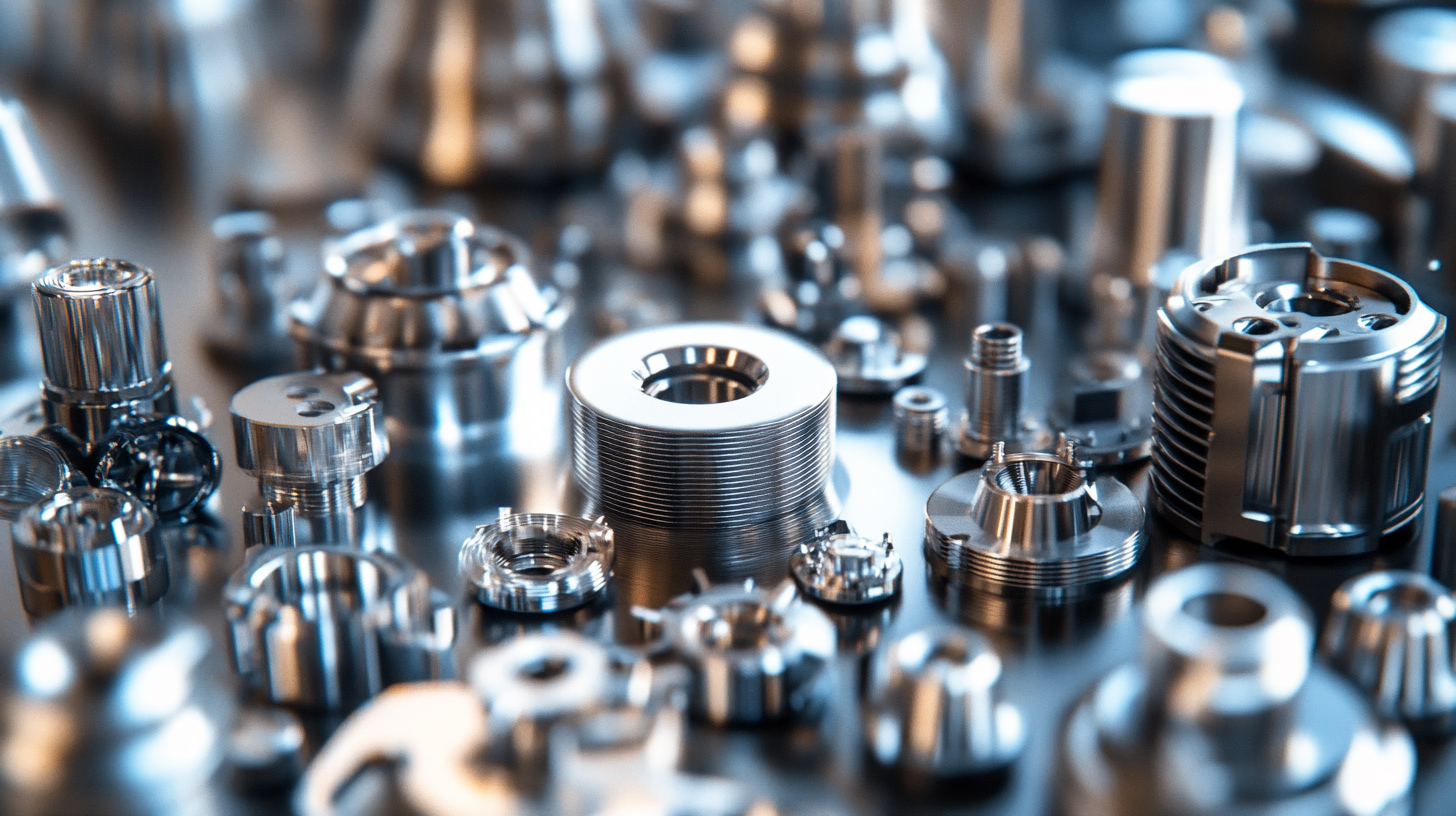

Challenges in Meeting Global Standards for Laboratory Device Manufacturing
The laboratory device manufacturing industry plays a critical role in supporting research and diagnostic activities across the globe. As of 2022, the global laboratory devices market was valued at approximately $47 billion and is anticipated to reach over $68 billion by 2027, growing at a compound annual growth rate (CAGR) of around 7.5%. This growth underscores the rising demand for advanced laboratory devices that meet increasingly stringent regulatory requirements and quality standards. However, manufacturers face multifaceted challenges when striving to align their products with global standards, particularly in a rapidly evolving technological landscape.
One of the primary obstacles in laboratory device manufacturing is the variation in regulatory frameworks across different regions. For instance, while the U.S. Food and Drug Administration (FDA) enforces strict guidelines, the European Union’s In Vitro Diagnostic Regulation (IVDR) introduces an additional layer of complexity with its specific compliance measures. Furthermore, technological advancements such as the integration of artificial intelligence and data analytics into laboratory devices necessitate constant adaptation to both certification processes and safety standards. Navigating these challenges effectively is vital for manufacturers not only to ensure product compliance but also to sustain their competitive edge in the global marketplace.

Understanding the Importance of Global Standards in Laboratory Device Manufacturing
In the realm of laboratory device manufacturing, adherence to global standards is not merely a regulatory requirement but a critical factor in ensuring product quality, safety, and interoperability. These standards serve as a universal framework that guides manufacturers in the design, testing, and production processes. By aligning with global standards, manufacturers can mitigate the risks associated with product variability and enhance the reproducibility of laboratory results, which is essential for maintaining scientific integrity.
Embracing global standards also facilitates international trade and collaboration. As laboratories increasingly operate on a global scale, the need for compatible and reliable devices becomes paramount. Manufacturers who comply with international standards can access broader markets and foster trust among international partners. Furthermore, these standards often promote innovation by encouraging the adoption of best practices and advanced technologies, ultimately leading to improved performance and efficiency in laboratory operations.
However, the journey to meet global standards is fraught with challenges. Companies must navigate diverse regulatory environments, cultural differences, and varying levels of technological advancement across countries. Additionally, the investment in compliance processes and training can strain resources, especially for smaller manufacturers. Nevertheless, understanding the importance of these global standards is pivotal, as it not only enhances product quality but also strengthens the credibility of the laboratory device manufacturing industry as a whole.

Key Technical Challenges in Compliance with International Standards
In the realm of laboratory device manufacturing, adherence to international standards poses significant technical challenges. One of the foremost hurdles is the variation in regulatory requirements across different countries. Manufacturers must navigate a complex landscape where standards like ISO, IEC, and FDA guidelines intersect yet diverge in their specifications. This inconsistency can lead to substantial delays in product launches and increased costs as companies struggle to ensure compliance across multiple jurisdictions.
Another critical aspect lies in the integration of advanced technologies within laboratory devices. As innovations such as IoT and AI increasingly become standard features, manufacturers must not only ensure that their products meet existing compliance benchmarks but also anticipate and adapt to evolving standards. This dynamic environment requires a proactive approach, wherein organizations invest in adaptive manufacturing processes and continuous staff training to keep pace with the rapid advancements in technology and regulatory frameworks.
Furthermore, quality control and assurance throughout the manufacturing process is essential in meeting these international standards. Implementing robust testing protocols that cover every aspect—from material selection to final assembly—can be daunting. Manufacturers must employ rigorous documentation practices and utilize advanced quality management systems to ensure that every component adheres to the highest standards. This meticulous attention to detail not only safeguards compliance but also enhances the overall reliability and safety of laboratory devices in the field.

Impact of Regulatory Variations Across Different Regions
In the landscape of laboratory device manufacturing, one of the most pressing challenges lies in navigating the intricate web of regulatory variations across different regions. According to a 2022 report from the International Laboratory Equipment Association (ILEA), 73% of manufacturers reported facing difficulties in complying with the diverse regulatory standards imposed by various countries. This disparity often leads to increased production costs and longer time-to-market for essential laboratory equipment.
The impact of these regulatory differences is particularly pronounced when considering the need for global harmonization. For instance, while the European Union mandates rigorous safety and performance testing for laboratory devices under the In Vitro Diagnostic Regulation (IVDR), the United States follows a different framework governed by the FDA's 21 CFR Part 820. A survey conducted by Regulatory Affairs Professionals Society (RAPS) in 2023 indicated that nearly 65% of manufacturers felt they needed to redesign their products to meet the stringent EU standards, reflecting the complexities introduced by regulatory fragmentation.
Moreover, regional discrepancies can hinder innovation. A 2021 study by BioPlan Associates found that 40% of researchers collaborated on projects involving multi-regional studies, but faced challenges in standardizing equipment and protocols due to varying regulatory requirements. As such, addressing these challenges is crucial for manufacturers aiming to maintain a competitive edge and ensure the swift availability of reliable laboratory devices on a global scale.
Strategies for Overcoming Barriers to Global Standardization
In the rapidly evolving field of laboratory device manufacturing, adhering to global standards presents a multifaceted challenge. Variations in regulations, technological advancements, and differing consumer expectations across regions can impede uniformity. To overcome these barriers, manufacturers can adopt a proactive approach that emphasizes collaboration and continuous education.
One effective strategy is to engage in partnerships with international regulatory bodies and industry associations. By actively participating in the development of global standards, manufacturers can gain insights into best practices, emerging trends, and compliance requirements. This collaboration not only helps to align manufacturing processes with global expectations but also fosters a culture of innovation where manufacturers can adapt and thrive.
Additionally, investing in training and development programs for staff is crucial. As regulations evolve, ensuring that employees are well-versed in compliance matters will enhance the organization’s ability to adjust swiftly to new standards. Regular workshops and seminars can help keep the workforce informed about technological advancements and regulatory updates. By fostering a knowledgeable team, manufacturers can better navigate the complexities of global standardization and position themselves as leaders in the industry.
Emphasizing quality control throughout the manufacturing process also plays a significant role in meeting global standards. Implementing robust quality management systems can help identify and mitigate potential issues before products reach the market. This diligence not only ensures compliance but also builds trust with clients and regulators alike, positioning manufacturers for long-term success in a competitive landscape.
Challenges in Meeting Global Standards for Laboratory Device Manufacturing
This pie chart illustrates the main challenges faced by manufacturers in adhering to global standards, alongside strategies to overcome these barriers.
Future Trends in Harmonizing Standards for Laboratory Devices
The future trends in harmonizing standards for laboratory devices are becoming increasingly crucial as the industry navigates the complexities of globalization and technological advancements. Recent insights from various conferences, including the 2024 International Standardization (Qilin) Conference, emphasize the pivotal role of standardization in driving high-quality development across sectors. For instance, the conference highlighted how leading figures, such as Wang Weisheng from the China Electric Power Research Institute, advocate for integrating standardized practices to enhance the effectiveness of emerging technologies.
In the laboratory device manufacturing sector, meeting global standards is not just a regulatory obligation but a pathway to innovation. According to the latest BCI industry research report, brain-computer interface technology is advancing rapidly, enabling seamless communication between human thought and external devices. This innovation is set to transform laboratory environments, necessitating compliance with established safety and operational standards to fully exploit its potential.
Furthermore, other sectors, such as crop protection, are also taking steps towards safer solutions in response to consumer demands and regulatory scrutiny. The global agchem industry is proactive in developing alternatives to synthetic pesticides, ensuring that safety standards evolve alongside product innovation. This convergence of efforts illustrates a broader trend where harmonizing standards across various technologies and sectors is essential for fostering innovation and meeting global market expectations.
Challenges in Meeting Global Standards for Laboratory Device Manufacturing
This chart illustrates the key challenges faced by laboratory device manufacturers in aligning with global standards. The data reflects the percentage of manufacturers reporting various obstacles in standard compliance.





